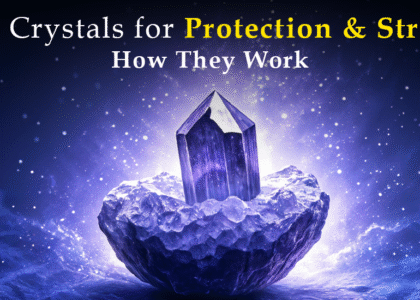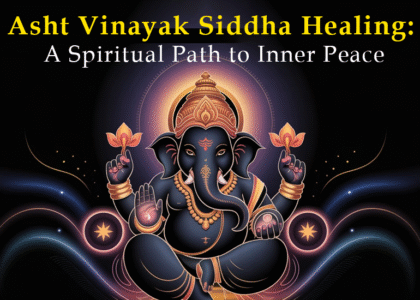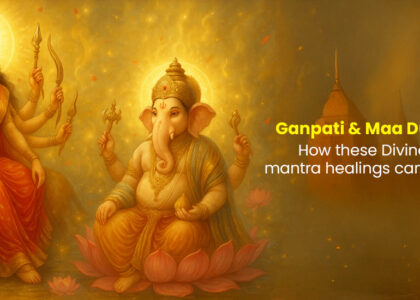The world of Reiki has grown into a $5.6 billion industry, with its popularity estimated to double by 2027. Reiki is incredibly getting integrated into healthcare worldwide. In the United States, over 800 hospitals which is approximately 18% have incorporated Reiki into patient care programs. While in India, Reiki is recognized as a contemporary therapy. Your journey into energy healing follows a structured path through three distinct levels. Starting with Level 1 for self-healing fundamentals, progressing to Level 2 for distance healing techniques, Level 3 which is also the Master level (this level is further divided into Level 3A and Level 3B), and culminating in the Master Level for those aspiring to teach others.
This blog will help you understand and discover everything needed to initiate your Reiki training for beginners’ journey, from choosing the right teaching approach to understanding certification requirements and building a successful healing practice.
Navigating the World of Reiki Training for Beginners
Starting your Reiki training for beginners’ journey is more than just learning any healing technique – it’s an invitation to self-discovery and transformation. Unlike conventional healing practices, Reiki is accessible to anyone willing to explore energy work. So what makes it so unique?
What makes Reiki different from other healing modalities
Reiki stands out from other energy healing approaches primarily through its universal accessibility.
- Effortless Learning: While many healing modalities require years of practice and specific talents, Reiki is “simply passed on from the teacher to the student” and “can be learned by anyone” regardless of intellectual capacity or meditation experience.
- Guided by Energy Not Intention: Unlike other healing methods, Reiki flows where it’s needed most, without requiring any extra effort or specific focus or intent from the practitioner.
- A Lifelong Gift: Once attuned, Reiki stays with you forever – it doesn’t fade, and you’ll always have access to healing power.
This makes Reiki an ideal starting point for beginners. Thereby offering a simple yet powerful way to enter into the world of energy healing. Ready to take the first step? Let’s explore how you can begin!
Essential qualities to develop before starting training
Before beginning your journey for Reiki training levels, there are some of the qualities that you must cultivate to significantly enhance your experience:
- Openness and receptivity – The best way to apply Reiki is to forget any predefined notions and uncertainties you might have; only then you will be open to the divine flow of Reiki.
- Trust – As professionals say, “a beginner and a professional Reiki practitioner are the same, the only difference lies in the fact that the professional one trusts their experiences and the yogic philosophies.
- Patience – Energy healing operates in a transcended timing, which is not the same as our schedules that are full of activities and appointments. Working on your spiritual intellect requires you to have a lot of trust in divine timing.
- Compassion – Reiki practice not only helps to see the light in us, but it will also surface the dark so that we can ascend through it.
These qualities aren’t prerequisites but developing them beforehand creates fertile ground for your Reiki practice to flourish.
Comparing Traditional and Modern Reiki Training Approaches
Reiki Training history has undergone a huge transformation from the time Mikao Usui launched it in Japan in 1922. There are two major types of Reiki training approaches – Japanese Reiki and Western Reiki. The difference between them is that each offers a distinctive teaching philosophy and style.
Let’s understand how these two approaches are different from each other.
Japanese vs. Western teaching methods
| Aspect | Traditional Japanese Reiki | Western Reiki |
| Philosophy | Focuses on spiritual growth, healing is a natural side effect. | Emphasizes hands-on healing as the primary goal. |
| Energy System | Uses the hara (lower abdomen) as the center of energy. | Incorporates Chakras, which is influenced by the Indian tradition. |
| Teaching Style | Ongoing practice, meditation-based, intuitive hand placements. | Taught in 1-2 days, structured hand positions. |
| Lineage | Preserves Usui Sensei’s original methods. | Modified by Howayo Takata in the 1930s. |
Additionally, there are some specialized forms or types of Reiki, such as, Kundalini Reiki, Karmic Reiki, and Asht Lakshmi Reiki – each of them having certain unique approaches and benefits.
Technology-enhanced learning in 2025
Reiki training has undergone a huge transformation in a significant way through technological integration. Although traditionally taught in-person with direct transmission, many practitioners are now embracing digital platforms to expand accessibility without compromising core principles.
Currently, you’ll find various technology-enhanced learning options including:
- Live online training sessions (group and one-on-one)
- Hybrid approaches combining in-person attunements with digital coursework
- Virtual practice communities for ongoing support
- Guided meditation apps specifically for Reiki practitioners
Practical Guide to Reiki Training Levels and Certification
The structured path to Reiki certification creates a foundation for your energy healing journey. First and foremost, understanding the progression through distinct levels helps you plan your training effectively.
Timeline expectations for each level
The Reiki certification path typically includes three main levels, though some of the top-notch healing resource centres offer four. A beginning Reiki class (Level 1/Shoden) usually spans a weekend, requiring at least 6-7 hours of instruction. This foundational level teaches self-healing basics and initial healing techniques.
Level 2 (Okuden) requires more preparation, with most respected programs recommending at least 40 hours of Reiki sessions and three months practicing with sacred symbols prior to enrollment. This intermediate stage introduces distance healing techniques.
The Master level (Shinpiden) demands substantial experience. Indeed, becoming a Reiki Master is a serious commitment requiring completion of previous levels plus adequate practice time. The Licensed Reiki Master Teacher program through the International Center for Reiki Training demands approximately 1000 hours of study, typically taking 3-4 years to complete.
Investment considerations beyond course fees
Investments in the Reiki treatment course in India can vary significantly across programs. Level 1 training averages around Rs. 3,000, Level 2 about Rs. 3500- 4,000, and Master level approximately Rs, 10,000 -15,000. Nevertheless, prices can fluctuate significantly. Some advanced courses or internationally certified programs may charge as high as Rs. 40,000 to Rs. 75,000 for higher levels.
Beyond tuition, consider these additional expenses:
- Practice materials and healing tools
- Professional membership fees
- Insurance coverage if practicing professionally
- Ongoing mentorship costs
Internationally recognized certification options
Several organizations provide recognized Reiki credentials:
- International Association of Reiki Practitioners (IARP) offers professional membership with resources like insurance options and referral networks
- Reiki Licensing Commission for Reiki Masters and Healers (RLCRMH) offers various license designations
- International Center for Reiki Training (ICRT) provides comprehensive licensing programs
Continuing education requirements
For professional practitioners, continuing education maintains credentials and expands expertise. Many Reiki Master Teachers offer “Certificates of Completion” for all classes, which can count toward continuing education credits. Subsequently, you may submit these to licensing boards, though acceptance varies by state.
Particularly for those combining Reiki with massage therapy, programs approved by the National Certification Board for Therapeutic Massage and Bodywork (NCBTMB) offer continuing education credits—some providing up to 36 CE hours.
Conclusion
Reiki is more than healing – it’s a journey of personal development and transformation with a career shift. Whether it’s the Japanese Reiki, Western or an Indian Reiki training, each method is one of a kind, which forms a story within the bigger context of the world of spirituality.
Success in Reiki training doesn’t only happen through certification. Rather it’s also about practicing ethical behaviour, creating sacred, powerful and spiritual spaces, and also building genuine connections. Reiki is exclusively characterized by its flexibility, and you have the option to do it solely or in collaboration with other therapeutic firms.
Once attuned, Reiki stays with you for life.
Ready to begin? Set your intentions, commit to learning and take your first step today.
FAQs
How long does it typically take to become a Reiki practitioner?
The process of becoming a Reiki certified practitioner usually flows several months to a year. This training path will take the trainees through the three levels of training, give them practical experience, and then, in the end, give them a certificate.
What is a Reiki healing crisis and how does it manifest?
Reiki healing crisis is a sudden appearance of symptoms that often happens during the healing treatment process. This is when the body is expelling the stored harmful energy or emotions, a process that might lead to feeling discomfort at times. This phenomenon is usually treated as the main proof of the body’s self-healing capability on Reiki work.
What must be done to be a Reiki practitioner?
As a Reiki practitioner, one must complete the training in the three main levels of Reiki. The program involves the techniques, methods of self-healing as well as the treatment of the patients.






